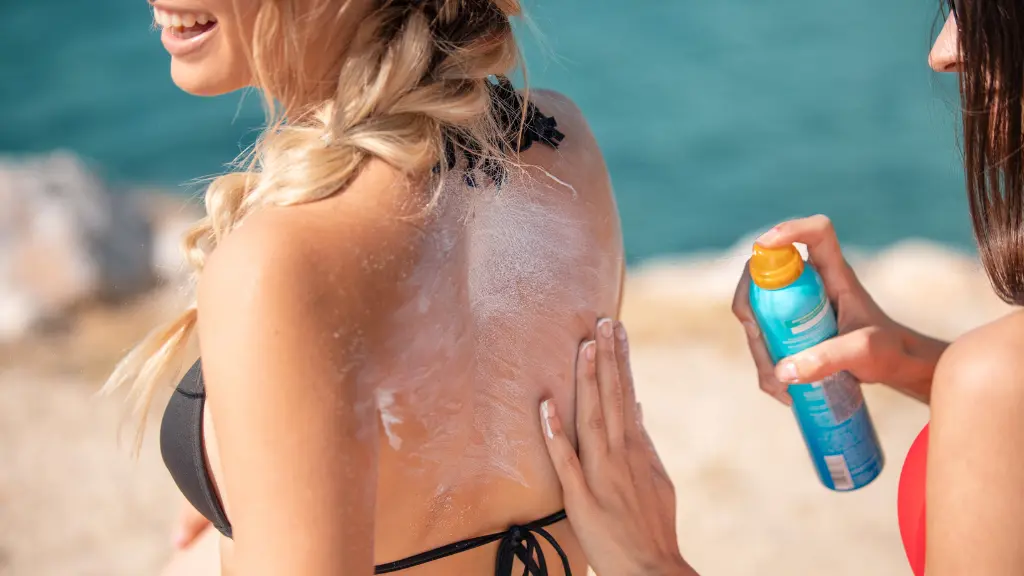Spray sunscreen has become a go-to product for many people seeking quick and convenient sun protection. The ease of application and ability to cover large areas of skin in seconds make it a popular choice, especially when you’re on the go, at the beach, or chasing after kids.
But with this convenience comes the question: Is spray sunscreen as effective as other forms like lotions and creams? And more importantly, are you using it correctly to ensure your skin is adequately protected?
In this blog, we’ll explore the pros and cons of spray sunscreen, whether it works as well as traditional sunscreens, and how to use it properly for maximum protection from harmful UV rays.
You May Also Like: 7 Proven Ways to Lower Your Cholesterol Naturally Without Statins
The Science Behind Sunscreen: How It Protects Your Skin
Before diving into spray sunscreen specifically, it’s important to understand how sunscreen works in general. Sunscreens contain active ingredients that either absorb, scatter, or reflect the sun’s ultraviolet (UV) radiation. There are two types of UV rays that can damage your skin:
- UVA rays: These penetrate deep into the skin, leading to premature aging, wrinkles, and skin cancer.
- UVB rays: These affect the skin’s outer layer and are the primary cause of sunburn.
Sunscreens are designed to protect against both types of rays (look for “broad-spectrum” on the label), and they come in different forms such as lotions, creams, sticks, and sprays. The key measure of sunscreen’s effectiveness is its Sun Protection Factor (SPF), which indicates how well it can protect skin from UVB rays. A sunscreen with SPF 30, for example, will allow you to stay in the sun 30 times longer than without any protection before getting burned.
Spray Sunscreen: The Pros
There’s no denying that spray sunscreen is incredibly convenient. Its popularity has grown due to several key benefits:
1. Quick and Easy Application
Spray sunscreen allows for fast coverage, making it ideal for people who don’t want to spend time rubbing lotion into their skin. This is especially helpful for active individuals, children, or anyone in a rush. With just a few spritzes, you can cover a large surface area, such as your arms, legs, or back.
2. Lightweight and Non-Greasy
Many people prefer the lightweight feel of spray sunscreen compared to thick lotions, which can sometimes feel greasy or heavy on the skin. Spray sunscreens tend to absorb quickly, making them less noticeable once applied.
3. Reaching Difficult Areas
One of the biggest advantages of spray sunscreen is its ability to reach hard-to-cover areas, such as the back, without needing assistance. It’s also convenient for applying sunscreen over body hair, which can sometimes get messy with lotion-based sunscreens.
4. Minimal Residue
Unlike lotions, which can leave a white cast or sticky residue, spray sunscreens tend to leave less of a visible trace. This makes them an attractive option for people who want sun protection without the feeling of heavy sunscreen on their skin.
Spray Sunscreen: The Cons and Risks
While spray sunscreen offers undeniable convenience, it’s important to be aware of its potential downsides:
1. Uneven Coverage
One of the biggest concerns with spray sunscreen is the potential for uneven application. Unlike lotions, which are easier to spread and ensure complete coverage, it’s harder to gauge if you’ve sprayed enough product on your skin. Missing spots or not applying enough can leave areas exposed to UV damage.
2. Inhalation Risks
When applying spray sunscreen, especially in windy conditions, there’s a chance of inhaling the aerosolized particles. The ingredients in sunscreen, such as oxybenzone and titanium dioxide, are meant for external use, and inhaling them can pose respiratory risks. For children, in particular, it’s essential to apply spray sunscreen with caution and avoid spraying near the face.
3. Environmental Impact
The propellant gases used in aerosol sunscreen cans can have a negative impact on the environment. While many brands are making efforts to reduce the environmental footprint of their products, aerosol cans still contribute to air pollution and landfill waste. If sustainability is a concern, you may want to consider eco-friendly sunscreen alternatives.
4. Flammability
Spray sunscreens are often labeled as flammable, especially right after application. There have been reports of injuries from people applying spray sunscreen and then being near open flames (like a BBQ or campfire). It’s crucial to read the label and avoid using spray sunscreen near heat sources until it’s fully dried on your skin.
Does Spray Sunscreen Work as Well as Lotion?
The effectiveness of spray sunscreen largely depends on how well it is applied. If used correctly, spray sunscreens can provide the same level of protection as lotions or creams. However, studies have shown that people tend to apply too little when using sprays, leading to inadequate protection. To ensure maximum effectiveness, it’s important to apply the right amount of sunscreen and follow these best practices:
Best Practices for Using Spray Sunscreen
1. Apply Generously
When it comes to sunscreen, more is better. Spray a generous amount of sunscreen to ensure full coverage. Hold the can about 6-8 inches away from your skin and spray until you see a sheen on the surface.
2. Rub It In
While spray sunscreens are designed to be convenient, it’s a good idea to rub the product in with your hands after spraying it on. This helps ensure even coverage and reduces the risk of missing spots. Pay special attention to areas prone to sunburn, like your shoulders, nose, and back of the neck.
3. Reapply Frequently
Just like lotion sunscreen, spray sunscreens need to be reapplied regularly. Sunscreen should be reapplied every two hours and immediately after swimming, sweating, or towel-drying. Don’t forget to reapply to hard-to-reach areas like your ears, the back of your knees, and your feet.
4. Avoid Spraying Directly on the Face
To avoid inhaling the spray or getting it into your eyes, spray the sunscreen onto your hands first, then rub it onto your face. This is especially important when applying sunscreen on children.
5. Use It in Wind-Free Conditions
Spraying sunscreen in windy conditions can result in uneven application or product being blown away before it even reaches your skin. If it’s breezy, consider applying spray sunscreen indoors or switch to a lotion to ensure full coverage.
Who Should Use Spray Sunscreen?
Spray sunscreens are ideal for people who are looking for convenience and ease of use. They are particularly beneficial for:
- Active individuals: Spray sunscreens are quick and easy to apply before heading out for a run, hike, or bike ride.
- Parents: Getting kids to stand still for sunscreen application can be challenging. Spray sunscreens make the process quicker and less of a battle.
- People with body hair: Spray sunscreen is a good option for those who find it difficult to apply lotion around body hair.
However, if you have sensitive skin, respiratory conditions like asthma, or are concerned about environmental impact, you may want to consider lotion-based sunscreens as an alternative.
Final Thoughts
Spray sunscreen is a convenient and effective way to protect your skin from the sun’s harmful rays, but only if it’s applied correctly. While it has many advantages, such as quick application and ease of use, there are some downsides to consider, like the risk of uneven coverage and inhalation of aerosolized particles. To ensure you get the best protection from your spray sunscreen, follow the tips outlined above and always remember to reapply regularly.
Ultimately, the best sunscreen is the one you’ll use consistently. Whether you prefer a spray, lotion, or stick, protecting your skin from UV radiation is essential for preventing sunburn, premature aging, and skin cancer. Stay sun-safe and enjoy your time outdoors knowing that you’ve got the right sun protection in place.










